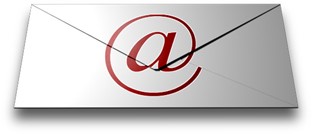Disaster Recovery
For Public Records Custodians, Archives and Libraries
Hurricane information
Tracking, onsite preparations and more.
Disaster recovery vendors
Our Disaster Recovery Vendors page has information on recovery services available from private companies.
How to dispose of unrecoverable public records
Please document those records lost or unsalvageable due to the effects of hurricanes, storm damage or other disasters. Include the following information:
- Retention schedule number
- Item number
- Record series title
- Inclusive dates
- Volume (It is not necessary to indicate volume of electronic records disposed.)
- Disposition action and date
- Indicate clearly that the records were lost or destroyed due to the effects of hurricanes, storm damage, or other disasters.
- Include photographic or other documentation of the damage if available.
For more information, contact our office at 850.245.6750.
Download our Records and Document Recovery Techniques Chart (PDF).
Mold and mildew
- Keep people with allergies, asthma or other respiratory problems away from infested areas.
- Prolonged exposure to germinating molds in confined areas can damage the lungs, mucous membranes, cornea, respiratory tract, stomach and intestines, and skin.
- Some varieties of mold are highly toxic.
- Wear disposable rubber or plastic gloves, a lab coat, and a respirator with a HEPA filter (an ordinary dust mask is inadequate) when working with moldy collections.
- Wash protective clothing in hot water and bleach.
- Respirators are ineffective if used improperly. For example, people with facial hair cannot get a tight fit and will not be protected.
For small outbreaks
- Separate moldy items from unaffected items.
- Move them to a well-ventilated location.
- Use tarps to provide walls.
- Set up fans to increase air circulation.
- Set up dehumidifiers or adjust your HVAC system to lower relative humidity.
- If possible, vent to the outside.
For large outbreaks
- Freeze the collections.
- This will halt but not kill spores.
- Collections can then be thawed, dried and cleaned.
- Thaw and dry items.
- Use dehumidifiers, air circulation and ventilators.
- Items must be completely dry before mold can be removed.
- Once mold has been deactivated, clean items.
- Vacuum the mold from the items using a HEPA-filtered vacuum and a micro-hose kit.
- Vacuum through a screen if the item is fragile.
- Clean the storage area.
- Begin by vacuuming with a HEPA-filtered vacuum.
- Next clean shelves, floors, walls, ceilings and windows with a mold and mildew killing solution such as Lysol, Clorox or X-14.
- Assess ducts and air conditioning systems for the presence of mold; they may need replacing.
- If the outbreak is too large for local staff to handle, call a vendor who specializes in mold remediation.
More information
- Florida Disaster: Plan and Prepare
- FEMA: Emergency Response Action Steps
- Council of State Archivists: Emergency Preparedness Resources
- National Archives: Disaster Response and Recovery
- Northeast Document Conservation Center: Preservation Leaflets
- American Institute for Conservation of History and Artistic Works: Heritage Preservation Programs
- Conservation Online
- Museum Management Program: Emergency Planning (PDF)
- Library of Congress Preservation: Response and Recovery
- MyFlorida.com



